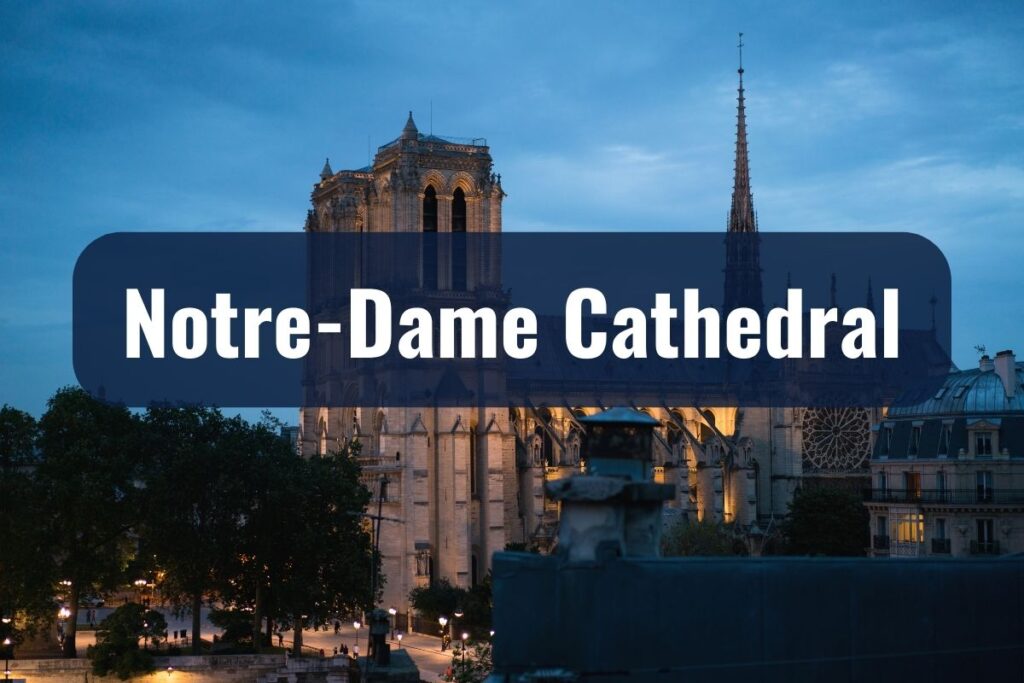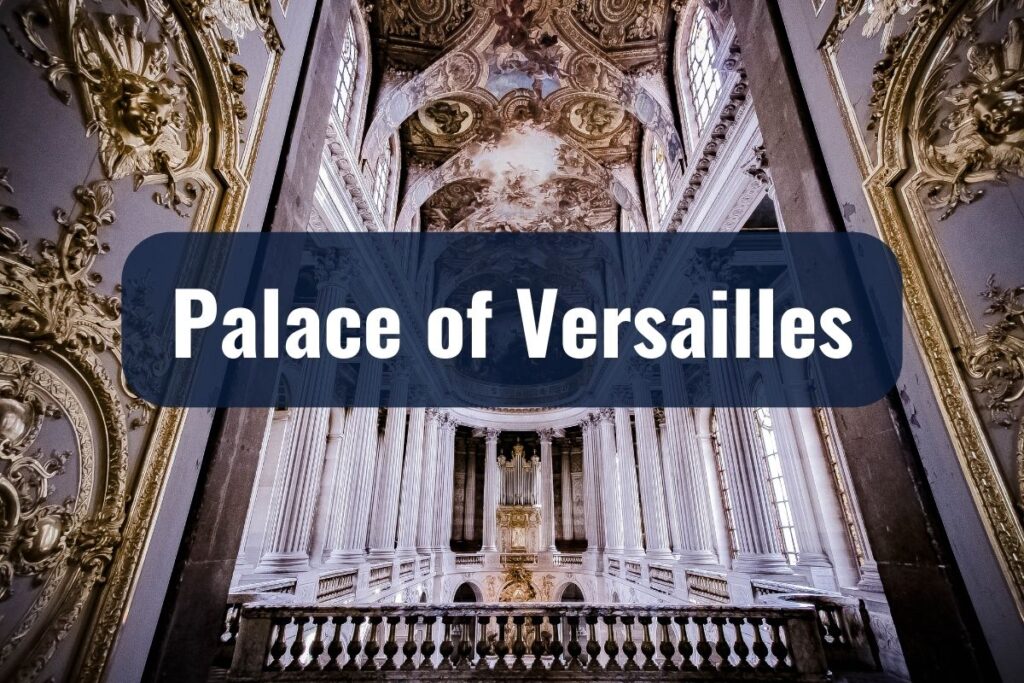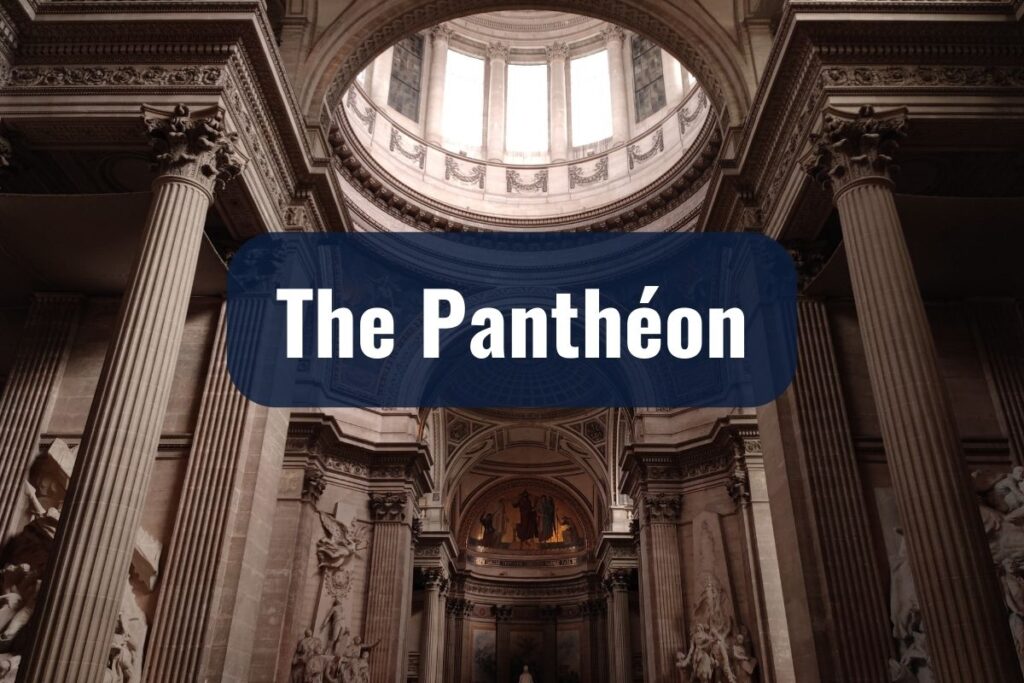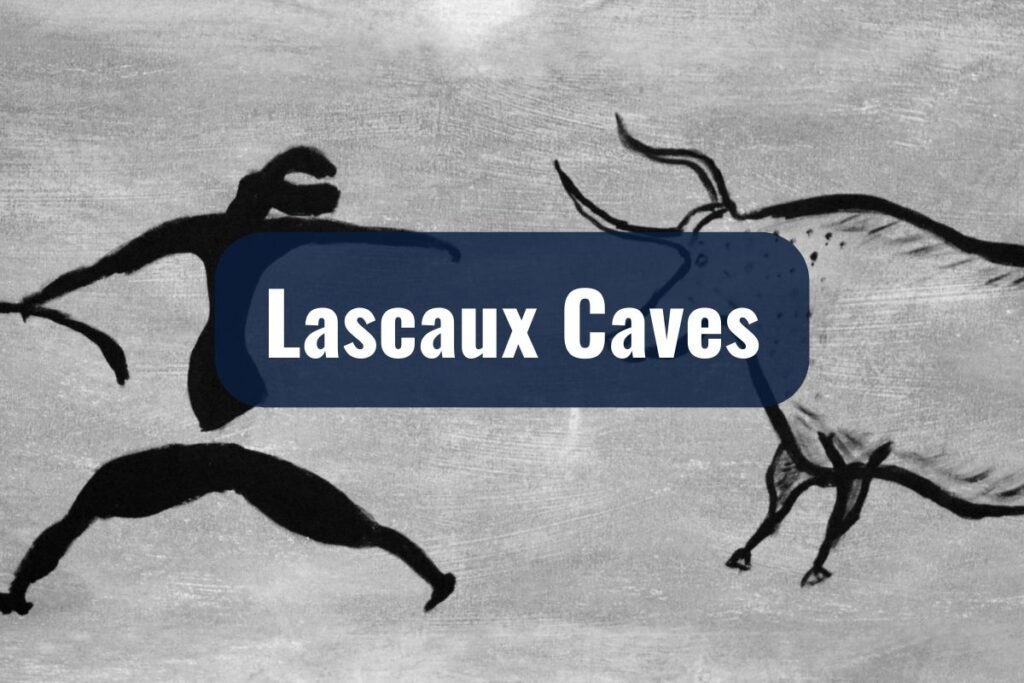France is renowned for its deep historical roots and unparalleled contributions to art, architecture, and culture, and offers a vivid tableau of its past through its monuments. These structures are not just architectural marvels; they are the narrators of France’s journey through time.
Monuments in France are more than just tourist attractions. They are the keystones of French identity, encapsulating centuries of history, art, and revolutions. Each monument, from towering gothic cathedrals to elegant Renaissance chateaus, tells a unique story. They echo the aspirations, struggles, and triumphs of the people who shaped France. Understanding these monuments is akin to unfolding the pages of a living history book, offering insights into the soul of French civilization.
In this exploration, we will delve into the histories, mysteries, and cultural significance of some of France’s most iconic monuments. From the heights of the Eiffel Tower to the depths of the Lascaux Caves, each site offers a unique perspective on France’s past and present. Join us as we uncover the stories etched in stone and time, revealing why these monuments hold a special place not just in France, but in the heart of the world.
KEY TAKEAWAYS
- The Eiffel Tower, an iconic symbol, is a testament to engineering and artistry.
- Notre-Dame Cathedral, with its Gothic architecture, is a living history book of Paris.
- The Louvre houses 9,000 years of history and 35,000 works of art, making it a global cultural gem.
- The Palace of Versailles reflects the grandeur of the French monarchy.
- The Arc de Triomphe stands as a symbol of valor and patriotism.
- Mont Saint-Michel’s unique architecture and history make it a captivating site.
- The Château de Chambord showcases the elegance of French Renaissance architecture.
- The Panthéon honors France’s luminaries and its journey from monarchy to republic.
- The Pont du Gard is an ancient engineering wonder that supplied water to Nîmes.
- The Lascaux Caves offer a glimpse into the artistry of our ancient ancestors.
Monuments in France: The Eiffel Tower
The Eiffel Tower, perhaps the most iconic symbol of France, stands as a marvel of engineering and a testament to the vision of its creator, Gustave Eiffel. Erected in 1889 for the Exposition Universelle (World’s Fair), marking the centennial celebration of the French Revolution, the tower was initially met with skepticism by many Parisians. Today, it is celebrated as a masterpiece of industrial art and a global icon of romance and elegance.
The Tower’s Journey: From Controversy to Icon
Upon its completion, the Eiffel Tower became the world’s tallest man-made structure, a title it held for 41 years until the completion of the Chrysler Building in New York. Its iron lattice design was a technological marvel of its time, showcasing the potential of metal as an architectural material. Initially criticized for its design, the tower was almost dismantled in 1909 but was saved due to its value as a radiotelegraph station.
Over the years, the Eiffel Tower has become synonymous with Paris and France. It has witnessed numerous historical events and has been featured in countless works of art and literature, embodying the spirit of Parisian innovation and elegance. Its twinkling lights at night have become a symbol of the city’s romantic allure.
The Tower Today: A Cultural and Touristic Landmark
Today, the Eiffel Tower attracts millions of visitors from around the globe each year. As they ascend its heights, either by foot or elevator, visitors are treated to panoramic views of Paris, offering a unique perspective of the city’s grand boulevards, historic bridges, and other famous landmarks. The tower’s three levels house restaurants and shops, making it a full-fledged experience beyond just an architectural marvel.
Notre-Dame Cathedral

Notre-Dame Cathedral, an epitome of Gothic architecture, stands majestically on the Île de la Cité in Paris. This cathedral, over 850 years old, is not just an architectural wonder but also a pivotal site in French history. Its construction, which began in 1163 and concluded in the 13th century, showcases the evolution of Gothic architecture, notably its flying buttresses, ribbed vaults, and stunning stained-glass windows.
Notre-Dame’s Legacy in French Culture
The cathedral has been a silent witness to many of France’s pivotal moments, from the coronation of kings to the turbulence of the French Revolution. It has inspired countless artists and writers, most notably Victor Hugo, whose novel “The Hunchback of Notre-Dame” brought the cathedral into the realm of legend and helped spark a renewed interest in preserving France’s historical monuments.
Notre-Dame’s interior is a testament to the skill and artistry of medieval craftsmen. The rose windows, the grand organ, and the intricately carved wooden pews speak of an era where artistry was intertwined with faith. The cathedral’s towers, statues, and gargoyles capture the imagination, offering a glimpse into the medieval mind and the era’s religious symbolism.
The Cathedral in Contemporary Times
In recent years, Notre-Dame has faced its challenges. The devastating fire of April 2019 brought the world’s attention to the cathedral’s fragility. However, it also highlighted the global affection and reverence for this monument. The ongoing restoration efforts are a testament to the enduring significance of Notre-Dame in the cultural and historical fabric of France.
The Louvre Museum
The Louvre Museum, nestled in the heart of Paris, is a monumental testament to art, history, and human civilization. Originally built as a fortress in the 12th century, it was transformed into a royal palace in the 16th century and later into a public museum during the French Revolution. Today, the Louvre is the world’s largest art museum and a historic monument of France.
| Artwork | Description |
| Mona Lisa | The famous painting with an enigmatic smile. |
| Venus de Milo | An ancient Greek statue of Aphrodite. |
| Liberty Leading the People | A powerful symbol of the French Revolution. |
| Museum’s Vast Collection | Over 35,000 works of art spanning millennia. |
A Treasure Trove of Human Creativity
The Louvre’s vast collection spans over 9,000 years of history, housing more than 35,000 works of art in an area of 60,600 square meters. It is a place where visitors can wander through the corridors of time, experiencing the artistic achievements of numerous civilizations. From ancient Egyptian artifacts to Greek sculptures and from Renaissance paintings to modern masterpieces, the Louvre offers an unparalleled journey through the history of human creativity.
Perhaps the most famous piece in the Louvre is Leonardo da Vinci’s “Mona Lisa,” renowned for her enigmatic smile. Other notable masterpieces include the “Venus de Milo,” an ancient Greek statue depicting the goddess Aphrodite, and “Liberty Leading the People” by Eugène Delacroix, a powerful symbol of the French Revolution.
More Than Just a Museum
The Louvre’s iconic glass pyramid, designed by architect I. M. Pei and inaugurated in 1989, blends the historical with the contemporary, symbolizing the museum’s ongoing dialogue between the past and the present. The museum not only serves as a custodian of the past but also as a center for cultural exchange and education, offering various exhibitions, workshops, and performances.
Palace of Versailles

The Palace of Versailles, a symbol of the absolute monarchy of the Ancien Régime, stands as one of the most magnificent achievements in French 17th-century art and architecture. Initially built as a hunting lodge for King Louis XIII, it was transformed and expanded by his son, Louis XIV, who moved the French court and government to Versailles in 1682. The palace served as the political power center of France until the royal family was forced to return to Paris during the French Revolution.
The Grandeur of Versailles
The Palace of Versailles is renowned for its opulent architecture, exquisite decorations, and the grand Hall of Mirrors, where many significant historical events, including the Treaty of Versailles to end World War I, were signed. Each room in the palace tells a story, adorned with lavish art and furnishings, reflecting the extravagance of the French monarchy.
The Versailles gardens are an integral part of the estate, showcasing classic French garden design. These meticulously landscaped gardens feature intricate patterns, elegant statues, and large fountains. The gardens were as much a symbol of Louis XIV’s absolute rule as the palace itself, representing control over nature and the arts.
Versailles: A Cultural and Historical Icon
Today, the Palace of Versailles is a UNESCO World Heritage site, attracting millions of visitors annually. It stands not just as a monument to royal luxury and power but also as a testament to changing tides in French history. The palace has been meticulously maintained, offering a window into the life and times of the French monarchy.
Arc de Triomphe
The Arc de Triomphe, standing proudly at the western end of the Champs-Élysées, is not only an architectural triumph but also a powerful symbol of French national pride and military valor. Commissioned by Napoleon in 1806 after his victory at Austerlitz and completed in 1836, this monumental arch is a tribute to those who fought and died for France in the French Revolutionary and Napoleonic Wars.
A Tapestry of History and Art
Each of the Arc’s facades features intricate sculptures and reliefs depicting victorious battles and significant moments in French military history. The most notable include the “Departure of the Volunteers of 1792” (often called La Marseillaise), which symbolizes the French people’s patriotic fervor. Beneath the Arc lies the Tomb of the Unknown Soldier from World War I, added in 1921, its eternal flame rekindling the memory of the soldiers who died unidentified in both World Wars.
An Iconic Emblem of Paris
Standing at 50 meters (164 feet) tall, the Arc de Triomphe offers a panoramic view of Paris when viewed from its terrace. The monument’s design has inspired other triumphal arches across the world. It is the linchpin of the historic axis (Axe historique) — a sequence of monuments and grand thoroughfares extending from the courtyard of the Louvre to the outskirts of Paris.
The Arc de Triomphe remains a site of national commemorative ceremonies, particularly on Bastille Day (July 14) and Armistice Day (November 11). It is not just a celebration of past victories but a memorial to the enduring spirit and sacrifices of the French people. As a central part of French national identity and Parisian skyline, the Arc de Triomphe continues to inspire and captivate the imagination of visitors and locals alike.
Mont Saint-Michel

Mont Saint-Michel, a UNESCO World Heritage site, rises majestically from its rocky islet in Normandy, France. This breathtaking medieval structure, surrounded by vast sandbanks and powerful tides, has been a strategic fortification since ancient times and a major cultural and pilgrimage center since the early Middle Ages.
A Testament to Medieval Ingenuity
The history of Mont Saint-Michel dates back to the 8th century when, according to legend, the Archangel Michael appeared to St. Aubert, bishop of Avranches, and instructed him to build a church on the rocky islet. Over centuries, this small church evolved into a stunning Benedictine abbey, showcasing the transition from Romanesque to Gothic architectural styles. The abbey, with its cloister, refectory, and grand halls, is a testament to the ingenuity of medieval architects and the spiritual dedication of its monks.
Symbol of French Resilience and Spirituality
Mont Saint-Michel has withstood sieges and the test of time, symbolizing the resilience of the French spirit. Its strategic position and religious significance made it an important pilgrimage site during the Middle Ages. Today, it continues to captivate visitors with its enchanting beauty and historical significance.
The approach to Mont Saint-Michel is as dramatic as the destination itself. The causeway, once the only access to the islet, and now replaced by a modern bridge, sets the scene for the awe-inspiring sight of the abbey rising above the horizon. The narrow, winding streets of the medieval village at the base of the abbey are lined with quaint shops and eateries, adding to the site’s charm.
Related: Best Places to Visit in France: From Landmarks to Local Gems
Château de Chambord
The Château de Chambord, nestled in the heart of the Loire Valley, is a masterpiece of the French Renaissance, reflecting the grandeur and ambition of its patron, King Francis I. Constructed in the 16th century, this château is not only a remarkable architectural feat but also a symbol of the artistic and cultural renaissance that swept through France during this period.
Architectural Innovation and Royal Prestige
Chambord is renowned for its distinctive French Renaissance architecture, which blends traditional French medieval forms with classical Italian structures. The most striking feature of the château is its elaborate rooftop, a mesmerizing array of towers, chimneys, and gables that create a skyline resembling a cityscape. The double-helix staircase at the heart of the château, attributed to Leonardo da Vinci, is another architectural marvel, allowing people to ascend and descend without ever crossing paths.
A Hunting Lodge Turned Architectural Jewel
Originally intended as a hunting lodge for King Francis I, Chambord evolved into a monumental display of wealth and power. The château’s vast halls, ornate chambers, and expansive gardens were designed to impress. Despite its grandeur, the château was rarely occupied by the king, and over the centuries, it has seen various uses and periods of neglect.
Chambord Today: A Cultural Landmark
Today, the Château de Chambord is a significant tourist attraction and a testament to the splendor of the French Renaissance. Its vast domain, consisting of parklands and forests, is a haven for wildlife, offering a glimpse into the natural beauty of the Loire Valley. As a symbol of France’s cultural and historical heritage, Chambord continues to enchant visitors with its beauty and history, reminding us of a time when architecture was a powerful expression of royal prestige and artistic innovation.
The Panthéon

The Panthéon, located in the Latin Quarter of Paris, is a mausoleum that houses the remains of distinguished French citizens. Originally built as a church dedicated to St. Genevieve, it was later converted into a mausoleum during the tumultuous times of the French Revolution. This neoclassical masterpiece symbolizes both the artistic grandeur of France and its recognition of human achievement and enlightenment.
From Sacred to Secular: A Symbol of Changing Times
The Panthéon’s architecture is a remarkable blend of simplicity and grandeur, inspired by the Pantheon in Rome. Its facade, modeled after a Greek temple, and its massive dome are emblematic of the neoclassical movement that swept through Europe in the 18th century. The building’s interior is equally majestic, with a vast crypt where many French luminaries are interred.
Resting Place of France’s Most Revered Heroes
The Panthéon is the final resting place for many of France’s most illustrious men and women, including Voltaire, Rousseau, Victor Hugo, Émile Zola, Marie Curie, and Alexandre Dumas. Each of these figures played a significant role in shaping French culture, science, and literature. The decision to inter someone in the Panthéon is a high honor, signifying extraordinary contributions to French society.
The Panthéon’s Role in French Culture
Apart from its function as a mausoleum, the Panthéon has a unique place in French culture and history. It stands as a reminder of the country’s complex journey from monarchy to republic, from religious to secular, and from tradition to modernity. The building itself has been a witness to many of France’s pivotal historical moments and movements.
Pont du Gard
The Pont du Gard, an ancient Roman aqueduct bridge, is a testament to the engineering prowess of the Roman Empire. Located in the South of France, near Nîmes, this architectural marvel stands as a symbol of Roman ingenuity and the importance of water supply in antiquity.
A Bridge Across Time
Built in the 1st century AD, the Pont du Gard was part of a 50-kilometer-long aqueduct that transported water from the Eure spring to the Roman city of Nemausus (modern-day Nîmes). Its three tiers of arches rise majestically over the Gardon River, with the highest arch reaching a staggering height of 49 meters (160 feet). The bridge’s construction without the use of mortar, relying solely on the precision of cut stones, is a testament to the advanced engineering techniques of the time.
The Role of Pont du Gard
The aqueduct served as a vital source of fresh water for the inhabitants of Nemausus and was a critical element in the city’s growth and prosperity. The bridge itself allowed the aqueduct to cross the river with a minimal gradient, ensuring a steady flow of water to the city.
Pont du Gard Today: A Heritage and Natural Site
Today, the Pont du Gard stands not only as a historical monument but also as a UNESCO World Heritage site. Its well-preserved state is a testament to its enduring quality and significance. Visitors can explore the bridge, walk along its upper tiers, and learn about the aqueduct system in the museum on-site.
Lascaux Caves

The Lascaux Caves, located in the Dordogne region of France, are a remarkable time capsule that transports us to the prehistoric world. These caves, adorned with stunning paintings and engravings, offer a unique and invaluable window into the creative minds of our ancient ancestors.
The Art of the Ancients
The cave complex, discovered in 1940, contains some of the most well-preserved and impressive examples of Paleolithic cave art in the world. The paintings, estimated to be over 17,000 years old, depict a rich tapestry of prehistoric life, featuring animals like bison, horses, mammoths, and intricate abstract symbols. The artists used natural pigments, such as iron oxide and manganese dioxide, to create their vibrant masterpieces.
The Mystery of Lascaux
The purpose of the Lascaux Cave art remains shrouded in mystery. Some theories suggest that these caves served as a sacred space or a form of storytelling. Regardless of their original intent, the paintings give us a unique insight into the lives and beliefs of our ancient ancestors.
Preserving the Past
Due to concerns about damage from the carbon dioxide exhaled by visitors, the caves were closed to the public in 1963. However, a meticulous replica known as Lascaux II was created nearby, allowing visitors to experience the awe-inspiring beauty of the original art. In recent years, advanced technologies have enabled scientists to study the caves in detail, uncovering new information about the techniques and materials used by the ancient artists.
Related: New to France: An Insightful Guide for Newcomers 2024


